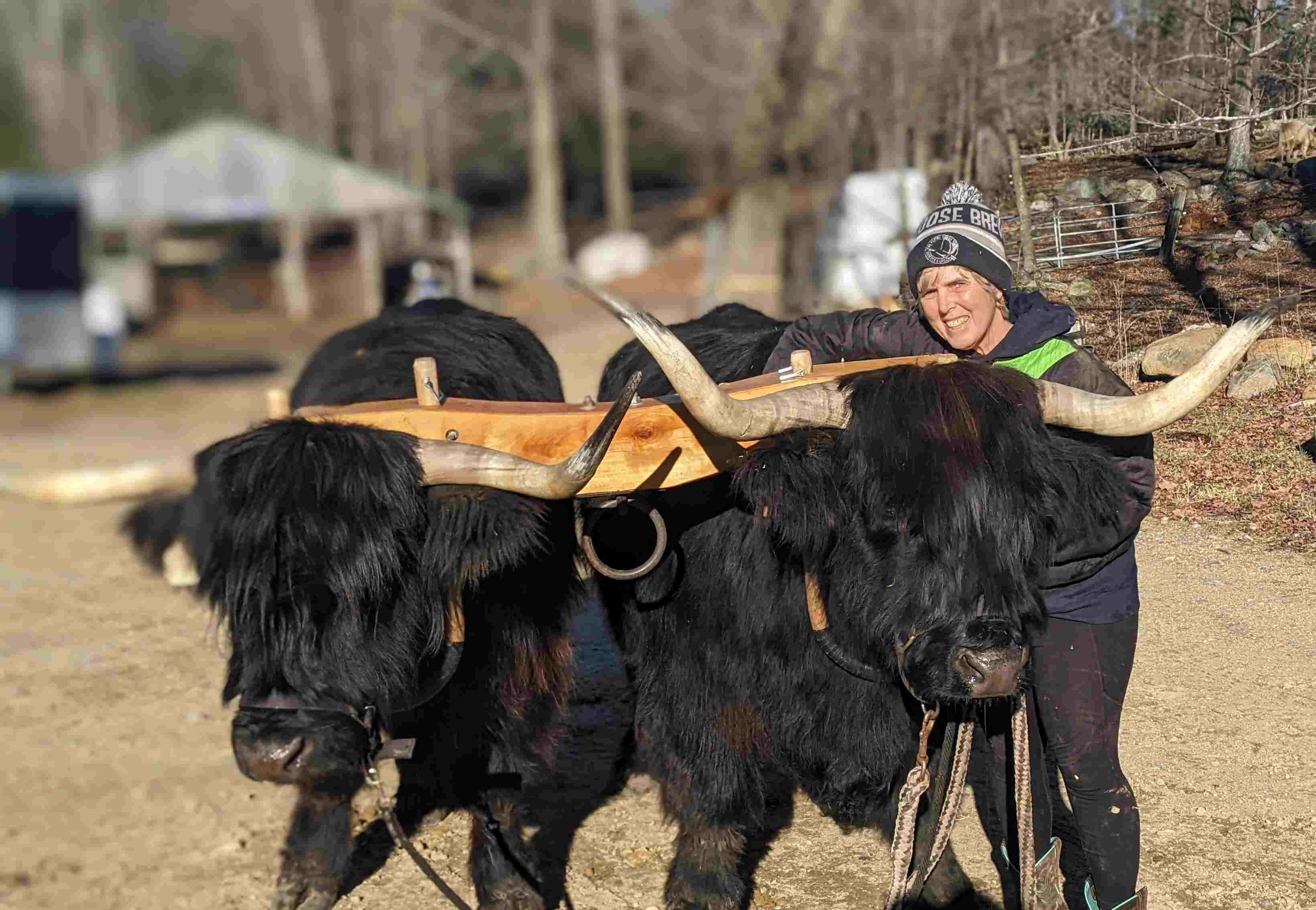Calves and Campers Learn Together
posted on
July 24, 2022

Sixteen kids trained eight calves during the second week of the Learning Networks Foundation Farm Camp at Miles Smith Farm. Campers Kiera led, and Sydney pushed Sophie, a white Scottish Highlander calf. The other kids and their assigned calves followed behind. The kids (8 to 14 years old) had three days to prepare their calf for a show on Friday, July 22.
Last Friday, nine teams and one camper led ten calves into the improvised show ring. Except for the single camper, one member of each team held the lead rope while the other camper walked behind, herding their calf around the ring. When the judge asked them, the campers told the audience of parents and friends about their calf's age, sex, breed, and even their temperature. The calves were calm, and the campers acted like they'd been showing calves their whole lives. Four days earlier was another story.
On the first day of last week’s summer day camp, nineteen kids between the ages of 8 and 14 descended on the farm. Most of them didn't know a lead rope from a clothesline. My job was to teach these young want-to-be-wranglers how to handle reluctant 150-pound calves who wanted only to get back to their moms.
Camper training started with a demonstration of how to "sit on the lead rope." I showed the campers how to bend at the knees, hold the lead line with their left hands, and put the lead under their butts with the other end with their right hands and sit on it. When done correctly, rope-sitting gives humans a superpower. I know. I've used it to control 800-pound cows.
We warned the campers never to wrap the rope around a hand. The line can snag on a wrist if the calf runs off and drag the holder. I also told the kids if the calf insists on running off, just let it go.
Calf Show
I assigned the teams on the second day and gave each team a calf to train for Friday's cattle show. For three days, the campers led, washed, groomed, and cuddled with their calves. The calves were not always obedient; Buttercup kept running to her mother, who was watching from a nearby field. But Buttercup's team, Irish and Max, were fine and, with help from a counselor, would retrieve Buttercup.
At least two counselors were on duty during calf training to help keep everyone safe, but the camp wasn't about just calves. The kids rode horses Snap and Moose and Curious Bleu, our 10-year-old Scottish Highlander riding steer. Campers also learned how to feed the goats, the donkey, sheep, pigs, rabbits, and chickens and played in the sprinklers at the end of each day.
The most challenging part of camp for me was the judging; everyone was so good! Parents, family, and friends sat in the shade on Friday, watching each team walk calmly around the temporary show ring. Connor and Miles had washed their dirty calf named Sophie to a brilliant white. Max and Irish kept Buttercup on course. Freddie, the youngest and most rebellious of the calves, tried to bounce around the ring, but team Elysium and Rowan kept him under control. Earlier I'd asked them if they wanted to switch Freddie for a steadier calf. But Rowan said, "No. We don't want to give up on Freddie," and they didn't.
Rose and Molly had Butterscotch, the biggest and most reluctant calf, but they prevailed. Poppy was feeling ill that day, but team members Lyle and Lochlan got back-up calf Harmony bathed and ready in time to take her into the ring. Each camper could have won a ribbon at any 4H county fair. I felt like a proud mother watching her children shine.
Our camp is a function of Learning Networks Foundation, which is the nonprofit aspect of Miles Smith Farm. And there's plenty of learning at both ends of the lead rope.
The Second Week of Camp
The first week of camp is over, and I will miss all of the kids, but we have sixteen new campers this week. They'll start with well-groomed, halter-trained calves, but don't worry about the curriculum; livestock farms have a way of providing a variety of challenges and fun.



